- Home |
- Search Results |
- ‘I feared I would never paint again’: the story behind the new cover of ‘The Lost Spells’
‘I feared I would never paint again’: the story behind the new cover of ‘The Lost Spells’
After The Lost Words, illustrator Jackie Morris decided to collaborate once again with writer Robert Macfarlane. But a family tragedy meant she had to work in the toughest of circumstances. Here she shares her story, and reveals the beautiful artwork itself.
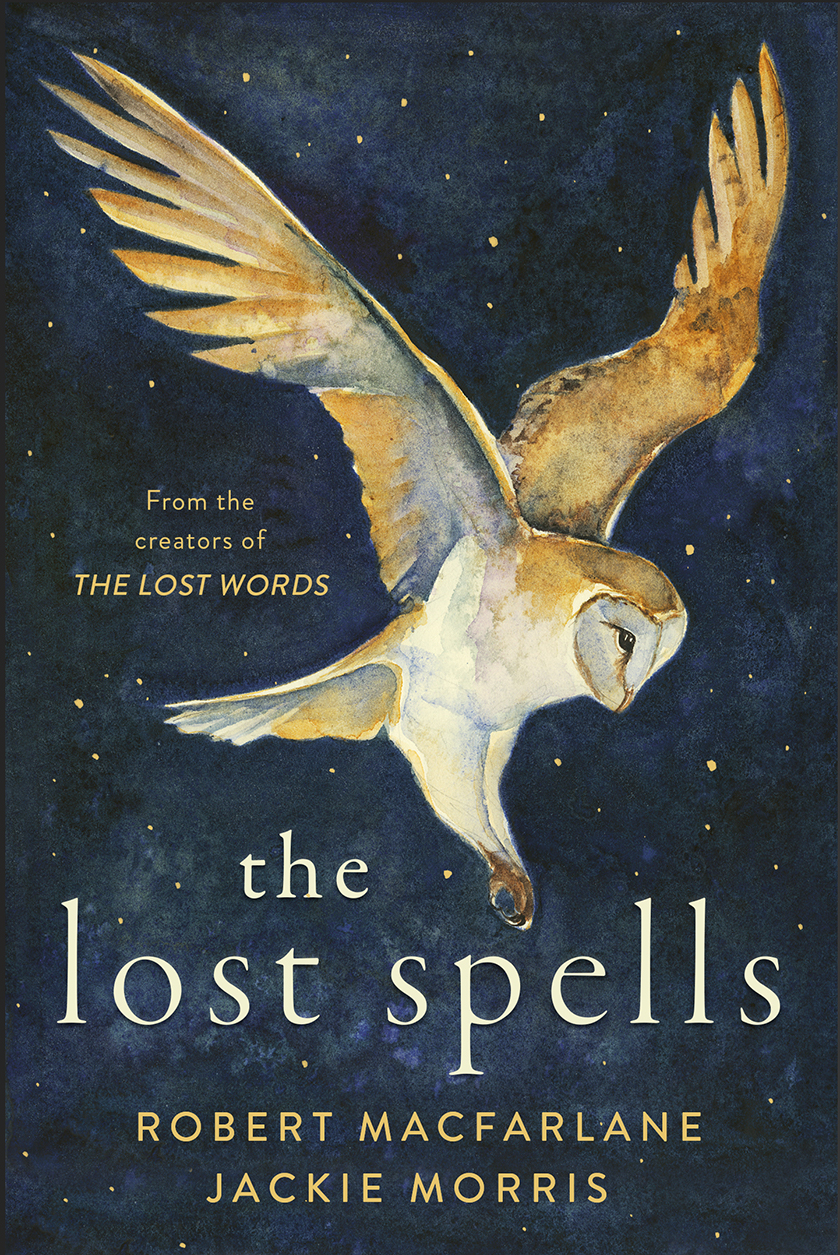
A book's cover is often how a book and reader first meet. And it’s part of the reason that The Lost Words' cover was designed last of all.
It went through difficult stages. We needed to find something that would sing of the spells inside. Goldfinches had been our guides through the book, and they flew through the pages, with their collective noun – a ‘charm’ of finches – linking to the ‘spells’. The dandelion clock was something I loved as a child, telling the time by blowing the parachute seeds, and the dandelion head sang of loss and hope for me. The Lost Words was a big book. It’s hard to miss it in a bookshop, as it doesn’t fit on the shelf, it takes up so much space.
Our new book, The Lost Spells, is small. You can fit it in your pocket, take it with you when you walk, read it in wild places, parks, gardens. It might easily become lost in the geography of a bookshop’s shelves.
The cover sketch came early on, as I played with ideas in a sketchbook.
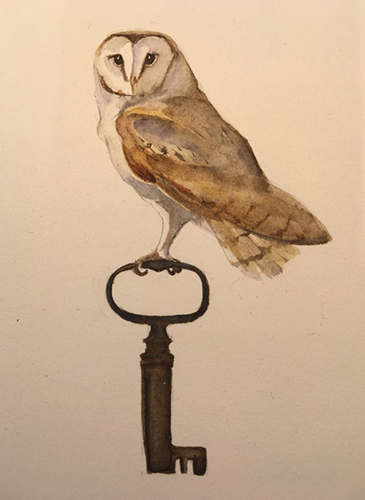
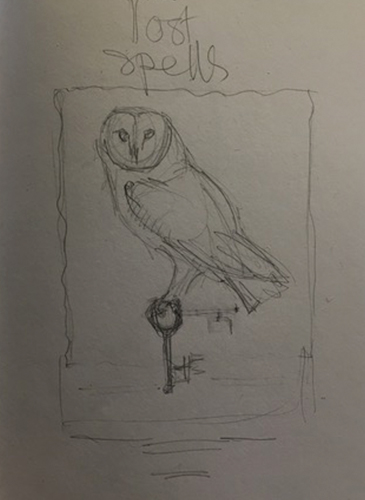
Robert and I had spoken about a guide for this book, as the goldfinch had been our guide for The Lost Words. The barn owl came to mind, for wisdom, for its hush-wing beauty, for strength, courage, for seeing into the darkness. I drew a sketch, then over months worked from my studio beside the sea in Pembrokeshire, seven days a week, growing and shaping work as Robert wrote. We’d been commissioned to produce 12 spells, illustrated. In the end there were 21, including the barn owl spell. Then I crafted away at a series of small paintings, also for the book, but now I was working on a tiny table in the corner of a bedroom in Broadway.
My dad had been taken into hospital, very ill; his heart was failing.
He had gone into hospital first in September. Robert wrote a spell for ‘Thrift’, the beautiful plant, bright pink, that grows on the cliff tops, and said he wrote it with me and pa in mind. I told Hamish Hamilton that I could meet the deadline, yes, so long as my father’s health stayed as good as it could be.
With The Lost Words, I had continued to work through Christmas, painting and gilding the magpie on Christmas day; with The Lost Spells I spent Christmas with my folks, just a few quiet days. Dad was frail, but hearing him singing around the house was beautiful. I think I knew then what was coming.
The last pages of the book were worked around hospital visits in February. Then, in early March, my pa slipped away, peacefully, having asked our permission to go. A peaceful death.
On the death certificate it said ‘heart failure’, but I think not. His heart took him where he wanted to be: at peace. It didn’t fail him. All of the book was done by then, except for the cover.
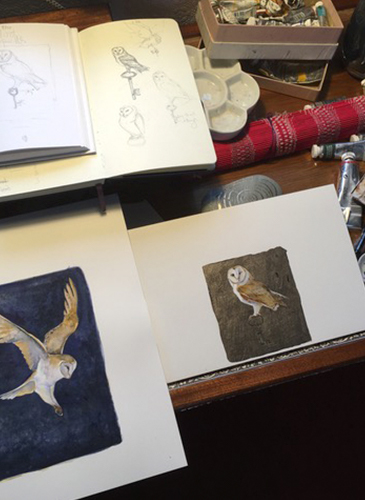
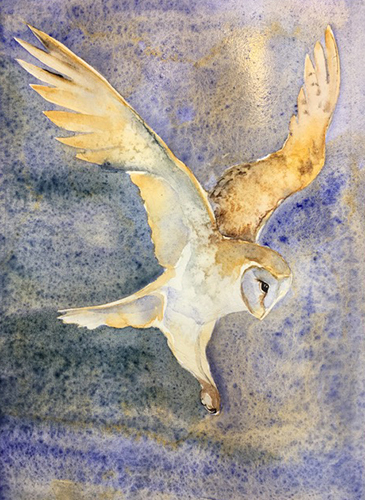
Twice I have feared that I would never paint again. The first time was after my son was born; holding him in my arms, I knew I could never create anything so perfectly beautiful ever again, and imagined that I would never be able to paint again. But I did, the week after, as I began work on my first book for children.
The second time was sitting in the corner of my bedroom, after pa was gone. But I sat, and I painted, painting through grief and finding that it was not what I had expected it to be like. I felt filled up with the memory of my dad, our shared love of birds, and the shape of a wing and the flow of the paint. It was a struggle to find the way, searching for the quiet beauty I hoped for.
But it came. Over the next few hours, I conjured the spirit of the owl onto the page. It’s a simple painting, gold wings against blue, muscle and flight, light and dark, balance. It was one of the hardest paintings I have ever had to do, but there’s such peace of mind for me in those moments of moving pigment over paper to create a vision.
Hush-winged owl is a bird of wisdom, learning, knowledge. A hunter. As I painted, I remembered also that in some cultures the owl calls the name of those who will die soon. She is a guide, to and through the Underworld, keen-sighted in darkness, a pathfinder. Then, suddenly, I was finished.
I had an idea of how the type would fit, but not what it would look like. It takes a good designer to make a cover work, to make it shine, and we have the best in Alison O’Toole, who brings incredible balance to word and image, with attention to detail and such skill.
A few weeks after finishing the cover, looking through edits and suggesting changes, I showed the painting to my ma. I told her how it had been one of the hardest pieces of work I had ever done. She looked at it, was quiet for a moment, then said, very softly: ‘Your dad would have loved that’.
The Lost Spells is out 1 October 2020.